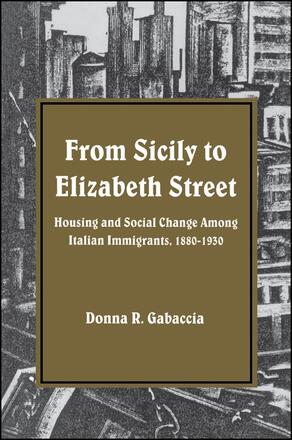
From Sicily to Elizabeth Street
Housing and Social Change among Italian Immigrants, 1880-1930
Alternative formats available from:
For many immigrants, the move from Sicily to a New York tenement was accompanied by rapid, significant, and often surprisingly satisfactory changes in a wide variety of social relationships. Many of these changes can be traced to the influence of a changing housing environment.
Description
From Sicily to Elizabeth Street analyzes the relationship of environment to social behavior. It revises our understanding of the Italian-American family and challenges existing notions of the Italian immigrant experience by comparing everyday family and social life in the agrotowns of Sicily to life in a tenement neighborhood on New York's Lower East Side at the turn of the century.
Moving historical understanding beyond such labels as "uprooted" and "huddled masses," the book depicts the immigrant experience from the perspective of the immigrants themselves. It begins with a uniquely detailed description of the Sicilian backgrounds and moves on to recreate Elizabeth Street in lower Manhattan, a neighborhood inhabited by some 8,200 Italians.
The author shows how the tightly knit conjugal family became less important in New York than in Sicily, while a wider association of kin groups became crucial to community life. Immigrants, who were mostly young people, began to rely more on their related peers for jobs and social activities and less on parents who remained behind.
Interpreting their lives in America, immigrants abandoned some Sicilian ideals, while other customs, though Sicilian in origin, assumed new and distinctive forms as this first generation initiated the process of becoming Italian-American.
Donna R. Gabaccia is Assistant Professor of History and Political Science at Mercy College, Dobbs Ferry, New York.